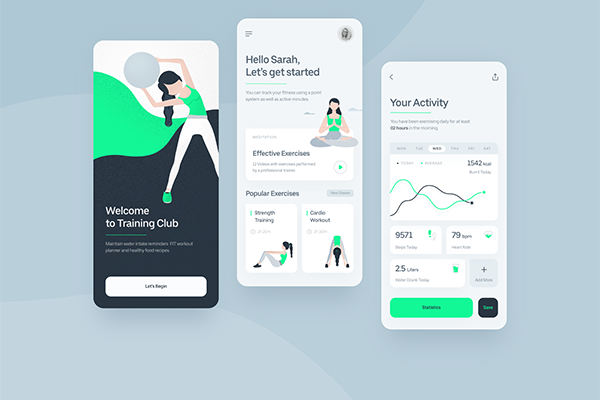According to a recently published analysis by Fact.MR, the Fitness Applications market revenue reached US$ 1.1 Bn in 2021 and is predicted to reach US$ 8.1 Bn by the end of 2032, by growing at a CAGR of nearly 20% during the next 10 years. The global market is likely to offer an absolute dollar opportunity of around US$ 6.8 Bn, where the Exercise and Weight Loss category commands the largest share of 49%.
The fitness Applications market surged rapidly with the onset of a global pandemic that abstained people from going to traditional gyms. The Covid-induced nationwide lockdowns and social distancing encouraged people in switching to virtual training platforms. With the increased subscriptions, the market is expected to grow at a rate of nearly 20% as compared to the historical average of 14.6% CAGR.
The Fitness Applications market is likely to rise as people become more aware of their physical and mental health. Consumers have begun to track their health issues, and based on this data, have begun to make lifestyle modifications for the greater good. Additionally, the developing online network of fitness studios and gyms has been aiding the adoption of these apps. Furthermore, providing fitness updates on social media sites encourages people to compete in a friendly manner. As a result, the demand for fitness applications will increase. The UK and Japan are predicted to offer the most lucrative outcomes throughout the forecast period of 2022-2032, expanding at a CAGR of 26% and 24.4% respectively.
The Fitness Applications market is likely to rise as people become more aware of their physical and mental health. Consumers have begun to track their health issues, and based on this data, have begun to make lifestyle modifications for the greater good. Additionally, the developing online network of fitness studios and gyms have been aiding the adoption of these apps. Furthermore, providing fitness updates on social media sites encourages people to compete in a friendly manner. As a result, the demand for fitness applications will increase. The UK and Japan are predicted to offer the most lucrative outcomes throughout the forecast period of 2022-2032, expanding at a CAGR of 26% and 24.4% respectively.
Key Takeaways from the Market Study
- The Global Fitness App market is expected to reach a market size of US$ 8.1 Bn by 2032.
- The market is expected to offer an absolute dollar opportunity of US$ 6.8 Bn in coming 10 years by growing at a CAGR of nearly 20%.
- The exercise & weight loss category is expected to remain the dominant segment, with an estimated growth of 19.4% during the forecast period.
- Japan and UK are anticipated to provide the highest growth opportunity in terms of CAGR of 24.4% and 26% respectively.
The fitness app developers can gain users’ confidence by adhering to the data regulations and building a user-friendly platform. This will provide them with a competitive edge among the market players, comments a Fact.MR analyst.
Competitive Landscape
The Fitness Applications market is dominated by several national and international players. They compete on product innovation, quality, brand recognition, trustworthiness, and market presence to offer their services across multiple sectors. Market competitors are improving their goods with modern features to improve functionality and reliability in order to provide a better consumer experience.
In addition, the market expansion is expected to be aided by the big corporation’s fundamental strategies of mergers, collaborations, and acquisitions.
Key developments in the market are:
- In October 2021, PEAR Sports acquired Aaptiv to expand its personalized approach to fitness and wellness programming for consumers and employers. The company plans to integrate Aaptiv’s offerings with PEAR Training Intelligence and make it a competitive fitness program service in the market.
- In April 2021, Adidas Runtastic collaborated with Tooz Technologies to develop a new immersive running experience for those athletes using smart glasses. This marked the start of research on the next-gen wearable technology.















